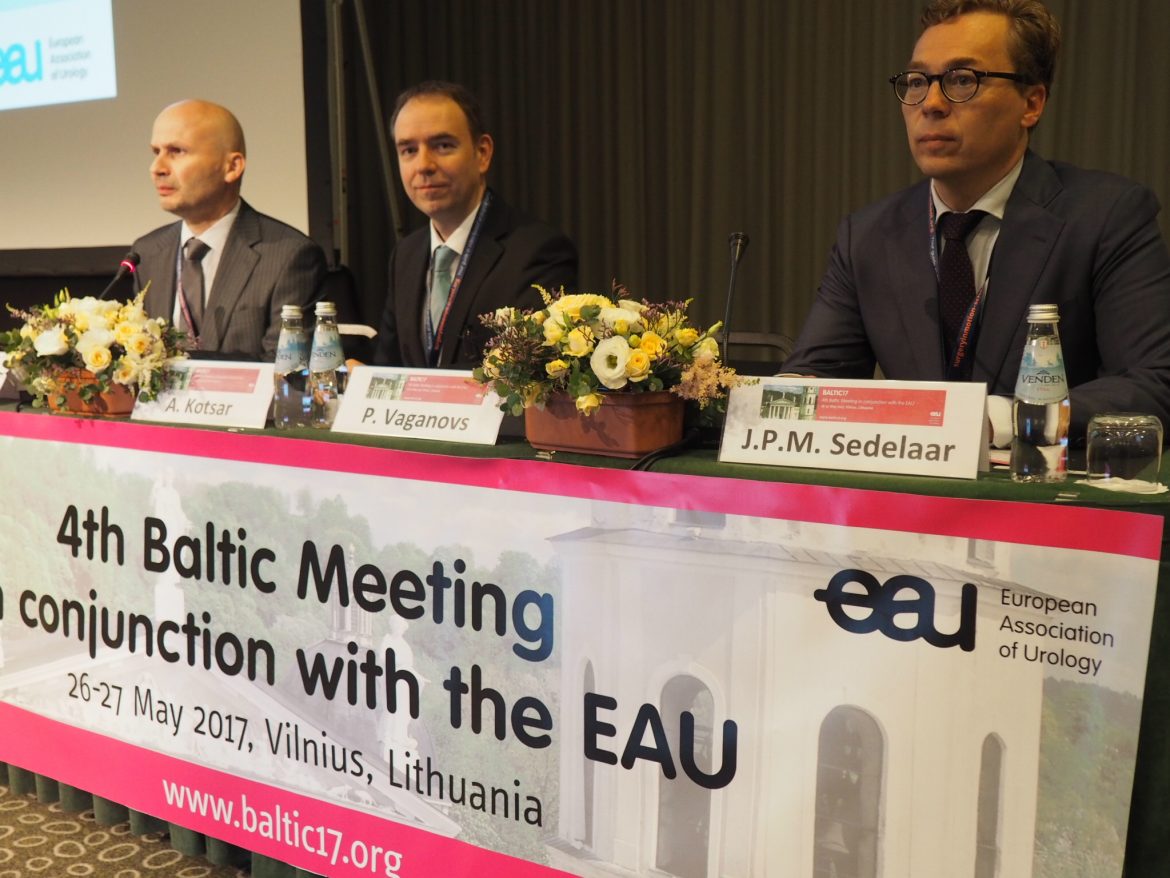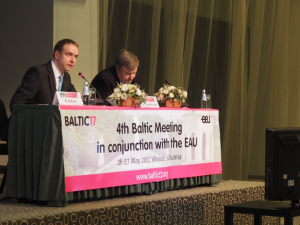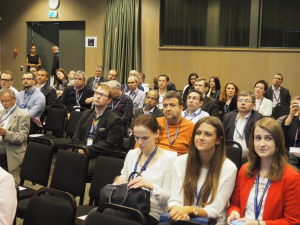Vilnius welcomed more than 250 participants to the 4th Baltic Meeting (BALTIC17) with the opening session focusing on best and current practices in diagnosing and managing urological cancers particularly the role of biopsy techniques, imaging tools, quality of life assessments and issues in patient selection.
Returning to the Lithuanian capital for the second time since 2014, BALTIC17 was held in conjunction with the EAU to provide a platform for education, training and professional scientific exchange for urologist based in the region.
“We take note of the enthusiastic involvement of many urologists in the region to organize this meeting as this provides a timely and quality venue where we can critically discuss and share knowledge on many scientific and clinical questions,” said organisers Professors Mindaugas Jievaltas (LT) and Feliksas Jankevicius (LT) as they welcomed participants coming from Latvia, Estonia, Belarus and host country Lithuania, Sweden, and Finland, among others.
“Engaging both young and experienced urologists from the Baltic countries to look into clinical dilemmas and quality practices is the right step to boost our specialty,” remarked Prof. Michel Sedelaar (NL) who gave the opening remarks on behalf of EAU Secretary General Prof. Chris Chapple (GB) who arrived later in the day.
Prof. Goran Ahlgren delivered the EAU Lecture with his comprehensive report on good PSA screening practice as exemplified in Swedish trials. Noting that screening practices aim to avoid over-diagnosis and correctly classify tumours, Ahlgren looked into the lessons learned from Swedish studies such as the Stockholm3 trials. He explained that PSA screening is currently not recommended in Sweden and revisions are still on-going with regards local guidelines.
“The Gothenburg study showed that organised PSA screening increases the incidence of prostate cancer and decreases mortality compared to unorganized random PSA testing,” said Ahlgren, suggesting that there is a benefit in the early screening of men. “Screening should start at 50 years of age and possibly be extended above 70 years.”
Meanwhile, Sedelaar gave an overview lecture on the role of multi-parametric MRI in decision-making for screening and focal therapy of prostate cancer (PCa). He noted the EAU guidelines on mpMRI.
“Correlation with RRP (Radical retropubic prostatectomy) has shown that mpMRI has good sensitivity for detection and localization of >GI 7 tumours,” said Sedelaar adding that there is “…no recommendation on using mpMRI for screening (negative mpMRI).” mpMRI, however, is recommended in cases prior or before repeat biopsies and during repeat biopsy.
In his concluding messages, Sedelaar said that mpMRI is not suited for PCa screening but is very useful in detecting and visualizing significant PCa in focal treatment. “mpMRI is useful for guided biopsy, patient selections and guided treatment,” he explained.
Bladder cancer and renal biopsy issues
Prof. Steven Joniau (BE) examined quality-of-life (QoL) issues for high-risk PCa after surgery and radiotherapy. “There are good overall survival (OS) and cancer-specific survival (CSS) following surgery and radiotherapy (RT) for high-risk PCa,” he said.
He, however, cautioned that administering adjuvant (RT) plus androgen deprivation therapy (ADT) have a major impact on QoL, particularly in elderly patients who complain of extreme fatigue.
“The best candidates for surgery are younger and potent men who can be treated with a uni or bilateral nerve-sparing radical prostatectomy and accept a 10 to 20% risk of incontinence and around 50% need of adjuvant salvage treatment,” said Joniau.
Dr. Achilles Ploumidis (GR) examined upper-tract urothelial cancer (UTUC)and said that UTUC and bladder cancer are two distinct diseases. “The role of URS plus biopsy in UTUC is essential in diagnosis, risk stratification and therapy,” he said adding that URS should be offered to all patients with suspected UTUC.
Prof. Alessandro Volpe (IT) discussed renal mass biopsy and looked into the reasons why there is a limited use of renal tumour biopsy such as safety issues and techniques. He said there is a need for a wider use of renal tumour biopsy to reduce unnecessary surgeries and support decision-making in patients with small renal masses (SRMs) who are candidates for non-surgical treatments.
“Renal tumour biopsy is easily feasible and a minimally invasive procedure and clinically significant complications are rare,” he said. “The diagnostic yield is also satisfactory in experienced hands.”
Dr. Alexander Rolevich (BY) gave a comprehensive lecture on fluorescent cystoscopy (FC)-assisted transurethral resection (TUR)and looked into the outcome in non-muscle invasive bladder cancer (NMIBC) patients.
“FC-assisted TURBT decreases recurrences and the baseline quality of TURBT is a significant factor,” he said. He also pointed out that FC-assisted TURBT also reduces progression. He recommended doctors to perform a high-quality TURBT which is “systematic “ and comprehensive. “Perform a check and cross-check and know your recurrence rate,” he said.
The two-day event also features several hands-on laparoscopy courses organised by the European School of Urology, poster presentations and a Country Competition session where young and promising urologists from the region present lectures to prompt a critical discussion of standard practices.





